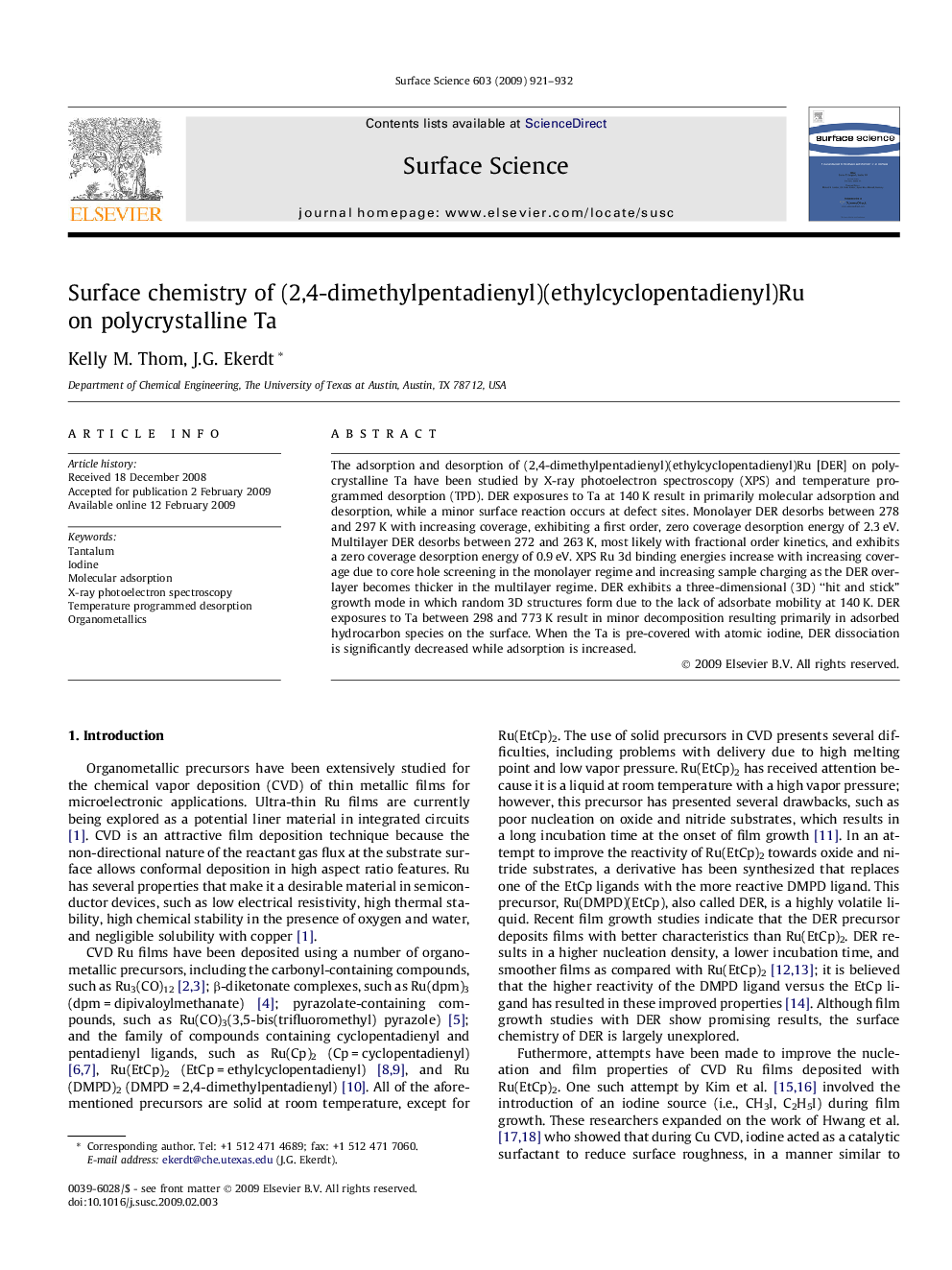| Article ID | Journal | Published Year | Pages | File Type |
|---|---|---|---|---|
| 5424090 | Surface Science | 2009 | 12 Pages |
Abstract
The adsorption and desorption of (2,4-dimethylpentadienyl)(ethylcyclopentadienyl)Ru [DER] on polycrystalline Ta have been studied by X-ray photoelectron spectroscopy (XPS) and temperature programmed desorption (TPD). DER exposures to Ta at 140Â K result in primarily molecular adsorption and desorption, while a minor surface reaction occurs at defect sites. Monolayer DER desorbs between 278 and 297Â K with increasing coverage, exhibiting a first order, zero coverage desorption energy of 2.3Â eV. Multilayer DER desorbs between 272 and 263Â K, most likely with fractional order kinetics, and exhibits a zero coverage desorption energy of 0.9Â eV. XPS Ru 3d binding energies increase with increasing coverage due to core hole screening in the monolayer regime and increasing sample charging as the DER overlayer becomes thicker in the multilayer regime. DER exhibits a three-dimensional (3D) “hit and stick” growth mode in which random 3D structures form due to the lack of adsorbate mobility at 140Â K. DER exposures to Ta between 298 and 773Â K result in minor decomposition resulting primarily in adsorbed hydrocarbon species on the surface. When the Ta is pre-covered with atomic iodine, DER dissociation is significantly decreased while adsorption is increased.
Keywords
Related Topics
Physical Sciences and Engineering
Chemistry
Physical and Theoretical Chemistry
Authors
Kelly M. Thom, J.G. Ekerdt,
